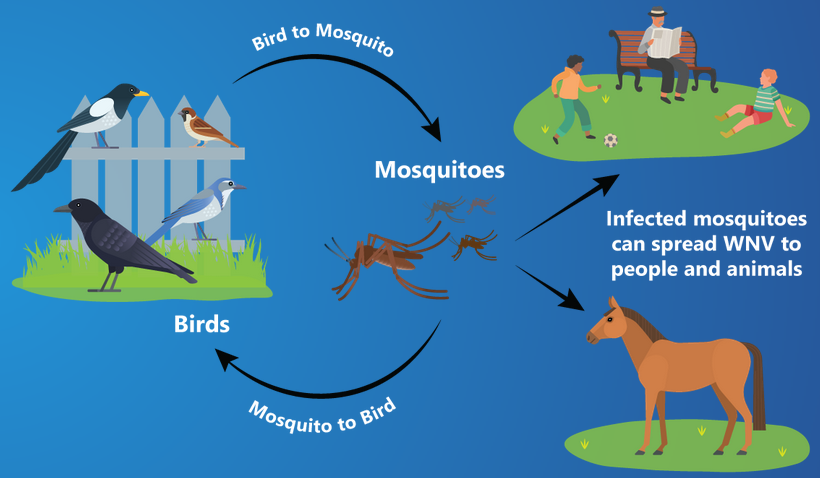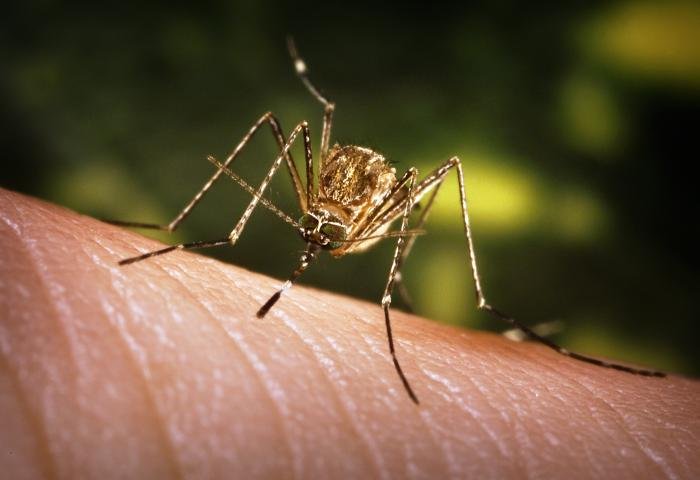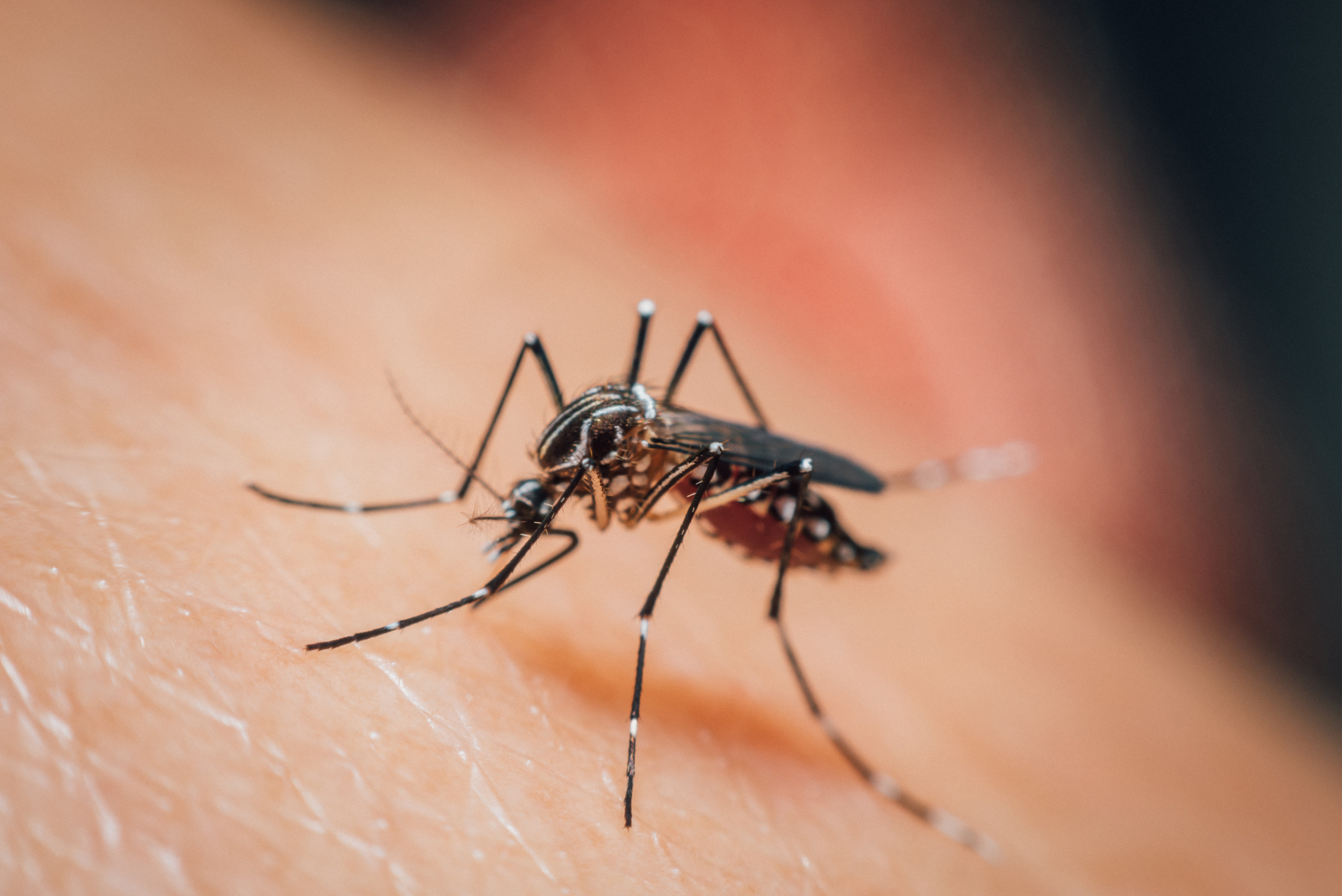Vector-borne diseases
Warming temperatures and changes in precipitation affect the spread of vector-borne disease patterns in California through their impacts on the mosquitoes and ticks that transmit infectious agents and the animal hosts that harbor them.
Vector-borne diseases are caused by viruses, bacteria, or other infectious agents transferred by mosquitoes or ticks (known as “vectors”) to humans and domestic animals. A changing climate creates conditions that accelerate the life cycle of vectors, and the replication of infectious agents. Of the 15 mosquito-borne viruses in California, the West Nile virus poses the greatest threat. About 1 in 5 people infected by West Nile virus develop fever and flu-like symptoms; a much smaller number (1 in 150) develop a serious, sometimes fatal illness involving the nervous system. For more information, download the Vector-borne Diseases chapter.
The life cycle of the West Nile virus, which is spread to humans and animals by the bite of mosquitoes that feed on the blood of infected birds.

Source: CDPH 2020
What does this indicator show?
Human West Nile virus cases in California, 2003-2023
This graph shows the number of reported human infections (does not include asymptomatic individuals).
- The number of human cases of West Nile virus reported in California has varied from year to year. The disease was first detected in 2003. Since cases are under-reported or undetected, these are likely underestimates. The occurrence of the virus in mosquitoes has also been variable.
- Although densely populated Southern California has the highest number of reported cases, the Central Valley has the highest number per 100,000 people (or “incidence rate”). The more serious (“neuroinvasive”) form of West Nile virus infections has affected Glenn County in the northern Central Valley the most.
Why is this indicator important?
- West Nile virus infections can lead to high fever, neck stiffness, disorientation, tremors, numbness and paralysis, and coma. Although rare, severe illness has been fatal in approximately 10 percent of cases. In California, over 390 deaths have been reported between 2003 and 2023.
- Ongoing surveillance of mosquito infection rates and human West Nile virus cases allows for actions to prevent the transmission of the virus.
- A changing climate may create conditions favorable for invasive mosquito species to expand their geographic range into California. Two new species detected within the last decade in central and southern California have the potential to transmit Zika, dengue, chikungunya, and yellow fever viruses.
Warming temperatures and changing precipitation patterns have altered the seasonality, distribution, and behavior of Culex tarsalis (left), the mosquito vector of West Nile virus. Aedes aegypti (right), an invasive species first detected in California in 2013, could potentially transmit Zika, dengue, chikungunya, and yellow fever viruses, which to date have been associated with travel.


Credit: PongMoji from Getty Images and CDC
What factors influence this indicator?
- Warmer temperatures allow both the mosquito and the virus to multiply more rapidly, increasing the potential for disease transmission.
- Above-normal temperatures and drought conditions are associated with increased West Nile virus cases. The highest number of deaths (and a high number of cases) was reported in 2015 – when the state was experiencing an extended drought and record-high temperatures.
- Non-climate factors that influence the transmission of mosquito-borne diseases include human behavior such as time spent outdoors when mosquitoes are active or the use of mosquito repellents, sanitation, and mosquito control programs.
Additional resources:
- California Department of Public Health (CDPH), Vector-borne diseases and West Nile Virus
- Centers for Disease Control and Prevention (CDC), Division of Vector-Borne Diseases and Disease Maps
